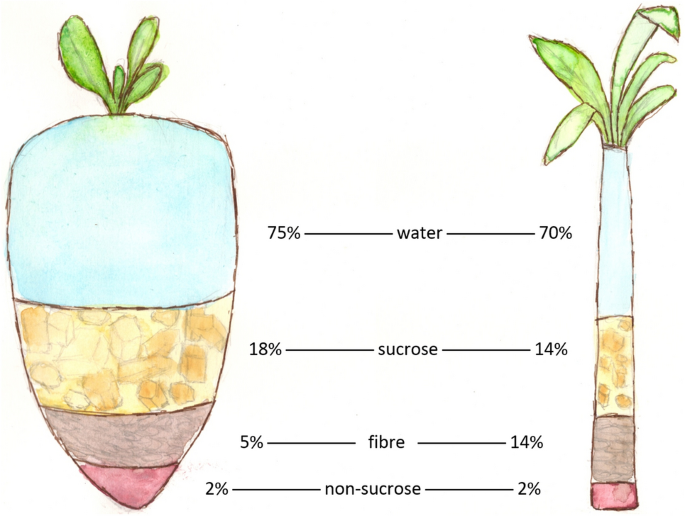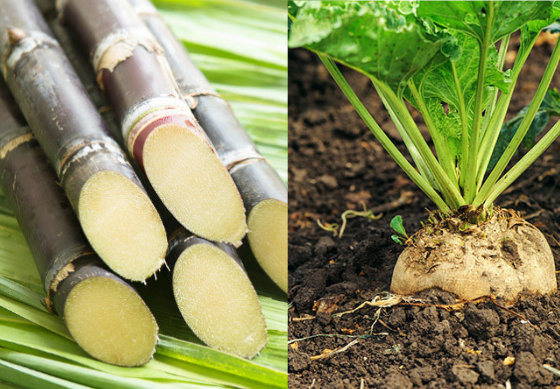The refining process of beet sugar vs cane sugar changes, affecting the final product’s appearance.
The refining process of beet sugar vs cane sugar changes, affecting the final product’s appearance.
Blog Article
Exploring the Differences in operation and Benefits In Between Beet Sugar Vs Cane Sugar
In the cooking globe, the option in between beet sugar and cane sugar is not just regarding sweetness but entails a nuanced factor to consider of taste, application, and influence. While both sugars stem from various plants, each goes through unique production procedures that subtly influence their features and suitability for numerous recipes. As cooks and customers significantly focus on both the ecological and flavor profiles of their active ingredients, understanding these distinctions becomes essential. This expedition offers insight right into just how each sugar type can best boost culinary productions.
Beginnings and Manufacturing Processes of Beet and Cane Sugar

Walking stick sugar, on the various other hand, originates from the sugarcane plant, a tropical turf belonging to Southeast Asia yet now cultivated in exotic zones worldwide. The production of cane sugar starts with the harvesting of cane stalks, which are squashed to launch the juice. This juice is after that boiled to focus it, after which it is rotated in centrifuges to generate raw sugar crystals. These crystals are further improved to create the white sugar typically readily available in shops.

Nutritional Content and Health And Wellness Considerations

When comparing the nutritional content of beet sugar and cane sugar, it becomes noticeable that both types essentially offer the exact same calorie values, with about 16 calories per tsp and no significant nutrient variety. Both sugars, when consumed in excess, can contribute to raised blood glucose levels, a risk aspect for diabetes mellitus and other metabolic conditions. From a health and wellness point of view, regulating intake of any type of kind of sugar, whether from beet or cane, is a good idea to avoid these prospective adverse effects on well-being.
Taste Profiles and Culinary Applications
Despite their similar chemical frameworks, beet sugar and cane sugar vary subtly in flavor, which can affect their usage in different culinary contexts. Cane sugar often lugs a tip of molasses, also in its refined type, offering a warm, caramel-like touch that boosts baked products, coffee, and chocolate-based dishes. This small molasses taste is specifically valued in the cooking industry for adding depth to sweets and pastries. On the various other hand, beet sugar is characterized by its extremely improved, neutral preference, making it a functional Discover More sugar that does not change the flavor accounts of recipes. This neutrality is specifically helpful in delicate dishes, such as light pastries, creams, and some sauces, where the fundamental tastes of various other components are meant to attract attention. Cooks and food manufacturers could select one type of sugar over the various other based on the preferred flavor end result of their culinary productions.
Ecological Effect and Sustainability
While both beet and cane sugars are originated from plants, their environmental impacts vary substantially due to the distinct methods of farming and handling needed for every. Sugar beet growing often entails extensive mechanization, which can increase fossil gas usage and carbon emissions. Beetroots can be grown in cooler environments and call for much less irrigation, potentially reducing water use compared to sugarcane. Sugarcane, on the various other hand, is typically expanded in exotic regions where it depends greatly on watering and a longer growing duration, increasing its water impact.
Moreover, the handling of sugarcane often produces a significant quantity of waste, including bagasse, which, although functional as biofuel, often adds to air pollution if shed inefficiently. Sugar beet processing utilizes even more of the raw products, causing less waste. Both markets encounter obstacles in minimizing their ecological footprints, however continuous developments in agricultural methods and waste management are intending to enhance sustainability.
Economic Factors Influencing the Sugar Industry
The financial characteristics of the sugar industry are dramatically influenced by international market demands and profession plans. In regions that site where sugarcane or sugar beet production is subsidized, producers may have an economic advantage that allows them to use lower prices on the international market.
In addition, variations in international demand for sugar, affected by nutritional trends and industrial usage in food products, straight impact prices and manufacturing levels. advice beet sugar vs cane sugar. Weather likewise play a pivotal duty, as they can considerably affect crop yields and, consequently, the supply chain. This variability presents a level of economic uncertainty that can bring about investment volatility in sugar production fields, affecting choices from growing to market technique
Final Thought
In final thought, both beet and cane sugar have distinct top qualities that match various cooking needs. While cane sugar imparts an abundant flavor suitable for improving baked items, beet sugar's nonpartisanship is ideal for lighter dishes.
Report this page